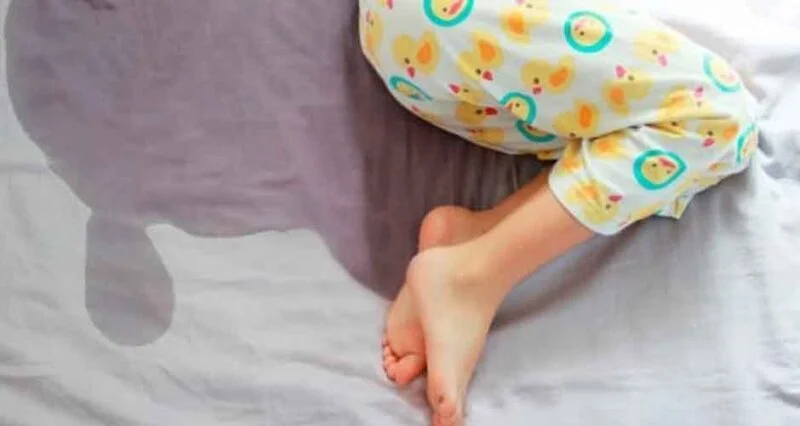
Bedwetting, medically known as nocturnal enuresis, remains a common concern among children, adolescents, and even some adults. Despite its prevalence, the stigma surrounding bedwetting often leads to embarrassment and isolation. It’s important to recognise that bedwetting is a medical condition, not a result of laziness or behavioural issues. Below are a few answers on how to stop bedwetting.
Causes of Bedwetting
Deep sleep patterns may prevent the child from waking up in response to bladder signals and abnormalities in the nervous system that affect bladder control. Certain medical conditions like constipation or urinary tract infections can also contribute to bedwetting. Environmental factors such as excessive caffeine consumption or inadequate toilet training can exacerbate the issue. It’s essential to recognise that bedwetting is a multifaceted issue with various potential causes, and addressing it effectively often requires a comprehensive approach tailored to the individual child’s needs.
Identifying Triggers
Understanding the triggers of bedwetting is crucial for effective management. Keeping a detailed diary to track patterns and potential triggers is essential. Factors such as caffeine or fluid consumption before bedtime, constipation, and certain medications can contribute to bedwetting episodes. Identifying and addressing these triggers can significantly reduce the frequency of incidents. Additionally, stress and emotional factors may play a role in some cases, highlighting the importance of creating a nurturing and supportive environment for the children. By proactively monitoring and managing potential triggers, caregivers can play a proactive role in helping their children achieve dry nights and fostering a sense of confidence and well-being.
Practical Strategies for Prevention
Implementing practical strategies helps minimise bedwetting occurrences and improve overall
sleep quality. Encouraging regular bathroom breaks throughout the day to empty the bladder adequately is essential. Limiting fluid intake in the evening, especially caffeinated and sugary beverages, can significantly reduce the likelihood of nighttime accidents. Investing in waterproof mattress protectors offers peace of mind and simplifies the cleanup procedure for parents in an accident. Establishing a consistent bedtime routine and creating a calm, relaxing sleep environment can further support children in achieving dry nights. These simple yet effective measures contribute to the success of managing bedwetting and promoting better sleep habits.
Behavioural Interventions
Behavioural interventions, notably employing positive reinforcement methods like sticker charts or small rewards, prove effective in managing bedwetting, especially in children. Additionally, establishing a consistent bedtime routine fosters relaxation and guarantees sufficient rest, contributing to better control over bladder function during sleep. Additionally, involving the child in decision-making regarding their bedwetting management and providing emotional support encourages active participation and enhances their sense of autonomy and responsibility. By combining these strategies, parents can create a supportive environment that empowers their children to take charge of their bedwetting journey, leading to increased confidence and, ultimately, dry nights.
Medical Intervention Options
If bedwetting persists despite lifestyle modifications, medical intervention may be necessary. Consultation with a healthcare professional can help to identify underlying medical conditions and explore treatment options. Medications such as desmopressin acetate can help regulate urine production and reduce bedwetting episodes. Behavioural therapies may also be recommended to strengthen bladder control, including bladder training and biofeedback.
Addressing Emotional Impact
The emotional impact of bedwetting should also be considered. Children and adolescents may experience feelings of shame, embarrassment, and low self-esteem as a result of bedwetting incidents. Open communication and reassurance are vital in supporting individuals experiencing bedwetting. Encourage a supportive environment where individuals feel comfortable discussing their concerns and seeking assistance. Additionally, fostering empathy and understanding among peers and family members can help alleviate the stigma associated with bedwetting, promoting acceptance and inclusion. By addressing the emotional aspects of bedwetting alongside the practical strategies for management, one can create a more supportive and compassionate community for those affected by this common childhood issue.
Seeking Professional Guidance
Persistent bedwetting may indicate an underlying medical issue requiring professional intervention. Consultation with a healthcare provider, such as a paediatrician or urologist, can provide valuable insights and personalised treatment recommendations. Medical professionals can conduct thorough evaluations, including physical exams and diagnostic tests, to identify potential causes of bedwetting and develop tailored management plans.
Conclusion
The answer to how to stop bedwetting can pose significant challenges for individuals and families, impacting sleep quality, emotional well-being, and daily functioning. With a comprehensive understanding of its causes and effective management strategies, individuals can take proactive steps towards achieving dry nights and improving overall quality of life. Individuals can overcome bedwetting and embrace restful, uninterrupted sleep by addressing triggers, implementing practical interventions, and seeking appropriate medical guidance. Remember, bedwetting is a common and treatable condition, and no one should feel ashamed or isolated due to nocturnal enuresis.

